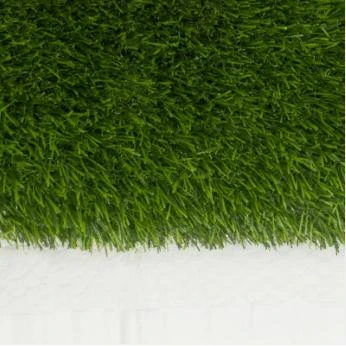
- Afrikaans
- Arabic
- Belarusian
- Bengali
- Czech
- Danish
- Dutch
- English
- Esperanto
- Estonian
- Finnish
- French
- German
- Greek
- Hindi
- Hungarian
- Icelandic
- Indonesian
- irish
- Italian
- Japanese
- kazakh
- Rwandese
- Korean
- Kyrgyz
- Lao
- Latin
- Latvian
- Malay
- Mongolian
- Myanmar
- Norwegian
- Persian
- Polish
- Portuguese
- Romanian
- Russian
- Serbian
- Spanish
- Swedish
- Tagalog
- Tajik
- Thai
- Turkish
- Turkmen
- Ukrainian
- Urdu
- Uighur
- Uzbek
- Vietnamese
dog wee and artificial grass
Dec . 30, 2024 01:56 Back to list
The Intersection of Dog Urination and Artificial Grass A Comprehensive Guide
As pet owners, we often find ourselves navigating various challenges that come with keeping our furry friends happy and healthy. One of the more significant challenges arises with dogs and their bathroom habits, especially when it comes to maintaining a clean and aesthetic outdoor space. With the growing popularity of artificial grass in residential settings, many pet owners are left wondering how does dog urination impact artificial grass, and what solutions exist to manage this blend of pets and landscaping?
Understanding the Challenges
Dogs have a natural instinct to mark their territory, and this involves urination. Unfortunately, dog urine can pose various problems when it comes to maintaining artificial grass. The primary concern is the potential for odor and the risk of bacteria buildup. Unlike natural grass, which can absorb and break down urine, artificial grass is synthetic, meaning it does not have the same capacity for filtering or degrading organic substances.
The ammonia present in dog urine can produce unpleasant odors, and if not managed properly, it can lead to a less than pleasant environment for both pets and their owners. Furthermore, urine can result in discoloration of the grass, detracting from its aesthetic appeal. These challenges necessitate a proactive approach to maintaining artificial grass when dogs are part of the household.
Benefits of Artificial Grass for Dogs
Despite the potential challenges, artificial grass does offer several advantages for dog owners. One of the most significant benefits is its low maintenance nature. Unlike natural grass that requires regular mowing, watering, and fertilization, artificial grass remains green and lush without much upkeep. This makes it an appealing option for busy pet owners who don't have the time to maintain a traditional lawn.
Additionally, artificial grass is durable and resistant to wear and tear from heavy foot traffic. It can withstand the energetic play of dogs, ensuring a consistent playing area for your pets. Moreover, modern artificial grasses are designed with proper drainage systems that allow for urine to pass through easily, minimizing pooling and potential odor concerns.
Tips for Managing Dog Urination on Artificial Grass
dog wee and artificial grass

To best manage the intersection of dog urination and artificial grass, pet owners can adopt several strategies
1. Regular Rinsing One of the simplest methods to minimize odors and prevent bacteria buildup is to regularly rinse the artificial grass with water. Depending on the number of dogs and their urination frequency, this may need to be done weekly or biweekly. A light spray with a garden hose can help remove urine residues and keep the turf fresh.
2. Use of Enzymatic Cleaners For areas that are slightly more troublesome, using enzymatic cleaners specifically designed for pet waste can provide a deeper clean. These cleaners break down the organic compounds in urine, eliminating odors and helping to keep the artificial grass in prime condition.
3. Designated Toilet Areas Training your dog to use a specific area for urination can help contain odors and minimize damage to the overall lawn. Using gravel or a similar material in that area can also aid in drainage and cleanliness.
4. Consideration of Grass Type When selecting artificial grass, consider options that are specifically designed for pets. Some products feature antimicrobial agents and better drainage systems, making them more resistant to odors and bacteria.
5. Regular Inspections Regularly inspecting your artificial grass for any signs of wear or damage is crucial. Prompt maintenance can prevent minor issues from becoming larger problems down the line.
Conclusion
As artificial grass continues to gain traction among pet owners, the way we manage our dogs’ bathroom habits must also evolve. By understanding the potential challenges and implementing effective management strategies, it is possible to create a harmonious coexistence between dogs and artificial lawns. This not only ensures a clean and pleasant outdoor space but also keeps our furry friends happy and healthy—an ideal scenario for any pet lover. With the right care, artificial grass can remain a functional and appealing part of your home landscape for years to come.
-
The Benefits of Artificial Turf for Indoors
NewsJul.15,2025
-
How Artificial Grass Suppliers Ensure Quality Products
NewsJul.15,2025
-
Artificial Grass and Pets: A Space for Relaxation
NewsJul.08,2025
-
Balcony & Outdoor Decoration with Artificial Grass
NewsJul.08,2025
-
Best Indoor Artificial Grass for Home
NewsJul.07,2025
-
Best Pet Turf for Dogs: Safe & Durable Artificial Grass Options
NewsJul.07,2025
Products categories









